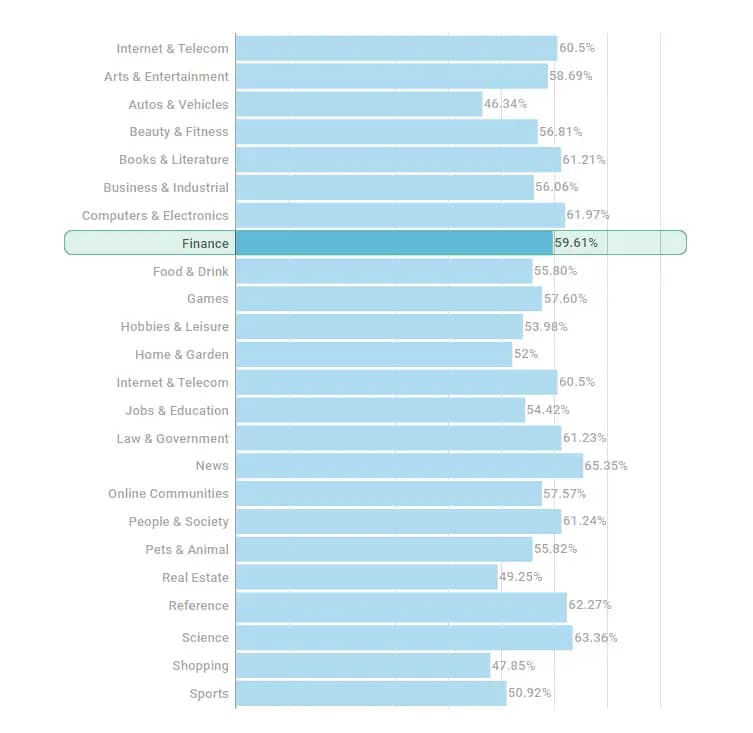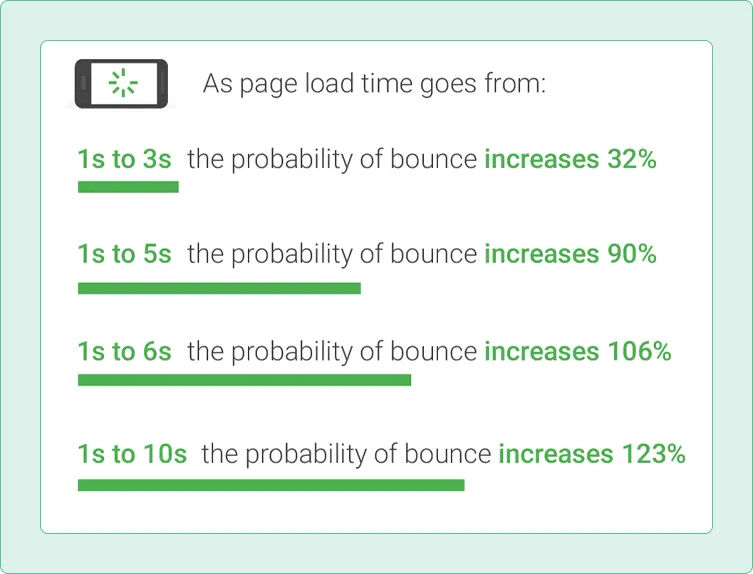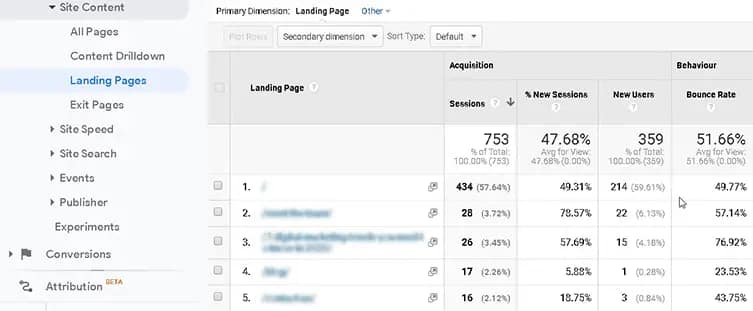This article is inspired by our clients, some of whom have asked us what a website bounce rate is and the importance it holds in SEO. Since boosting website traffic and keyword ranking take precedence in digital marketing, bounce rates can end up taking a back seat. But then why do marketers insist on adding a column of Google Analytics bounce rate for landing pages in the monthly traffic report? In this article, I’ll explain why:
What is Google Analytics bounce rate?
According to Wikipedia, bounce rate is an internet marketing term to analyse web traffic. Basically, it’s a metric of Google Analytics (GA) that measures the percentage of users who land on the landing pages of your website or on a particular page of your website but leave from there without initiating any action (such as filling the contact form) on it or visiting another page on the site.

So, if a user leaves the webpage without going to another page or clicking an internal link or menu of that page and ends the visit, then it is considered as a bounce.
For example – Sam lands on a landing page of a website called “example.co.uk/abc” and leaves from there without engaging on that page. So GA will consider this as a bounce and its percentage is called a bounce rate.
How is the Google Analytics bounce rate calculated?
Let me explain this to you with an example: if one of your service pages, let’s call it ‘page A,’ received 100 unique visitors in a month, out of which 50 left without doing anything on that page in a certain time period, then the average bounce rate will be 50%.

Here’s the formula:
Average bounce rate = total visitors of page A without any engagement (in a time period)/total visits of page A (in that time period)*100
500/1000*100=50%
This is how Google Analytics calculates bounce rate for a landing page or a website.
Does the Google Analytics bounce rate include scrolling?
Yes, it does. If a user scrolls your page up and down without going to another page, then it is still recorded as a bounce.
What is a good average bounce rate for a website?
Here is an overview of the Industry wise bounce rate benchmark:

This is a frequently asked question by our clients, and to be honest, it depends on various elements such as the type of website, visitor behaviour, and products and services offered. A good bounce rate benchmark is 40% to 50% which is excellent. 50% to 60% is average, upto 70% is no threat and 80% or more is very disappointing and needs attention.
Is low Google Analytics bounce rate good?
Yes! If your website’s average bounce rate is 26% to 40%, that means you are able to engage your visitors as soon as they land on any landing page of your website. That is always a good sign.
What can make a website bounce rate high?
The Google Analytics bounce rate is high when there is an issue with a website’s design, usability, messaging, content or functionality. These issues make the users abandon the website without taking any action, leading to a high bounce rate. For example, if a paid ad on Google takes the user to a page on a website which makes no reference to the offer on the ad, it is likely that users will click off of the page immediately because they have not found the information they were expecting. This will lead to a high bounce rate.
Does the bounce rate affect keyword ranking?
Though the Google Analytics bounce rate has no direct impact on ranking, it plays a very important role in Google’s algorithm, as shown in the screenshot below. But how?
According to Moz, Google’s algorithms use the user engagement as a validation method to check whether websites getting high CTRs actually deserve them and if the clicks are indeed valid or just ‘click bait’.
It is only after considering the clicks and engagements that Google gives the authority to the website. High authority leads to high trust that leads to improved organic ranking. Relevant traffic can improve your bounce rate.
How to improve Google Analytics’ bounce rate?
1. Make your website user-friendly
Build a website with good user interface and user experience (UI/UX). Having an outdated website could put off your clients, and they may hop on to your competitors who have updated websites. Good user experience can boost your website performance level.
2. Update and optimise with regular content
Updating your website with relevant content regularly can boost your accounting website’s bounce rate. Research current hot topics and include your own view, response or opinion. Check and improve the readability of content if necessary, so that users will stay on your website to read your useful content.
3. Minimise page loading time
Ask your in-house website developer or outsourcing partner to minimise the page loading time. That metric has a direct impact on ranking but it has a significant role in ensuring high bounce rates as well, says Think With Google.

A Backlinko study says the average page loading time for desktop is 4.7 seconds and 11.4 seconds for mobile. But the best practice is to maintain a page loading time under three seconds.
Bonus tips
Check your website speed on mobile by Thinkwithgoogle.
For desktop, check with Google PageSpeed Insights.
4. Add relevant call to action (CTAs)
Only updating content is not enough; you have to add relevant call to actions that stand out in the eyes of the visitors. Without a noticeable CTA, they may get bored or distracted and want to leave immediately without realising there is additional information available on the site. Nearly 50% of websites see improved results if they have a clear call to action.
How to check the bounce rate of a specific landing page of your website:
- Log in to Google Analytics
- Click “Behavior” under the Standard Reports on the left-hand navigation menu
- Click “Site Content”
- Click “Landing Pages”

Before you start spending time analysing how your website fares, please remember that TLBM can help you with all your accountancy practice website needs including reversing poor bounce rates and can turn it into a growth machine. Book your free consultation with us today.


